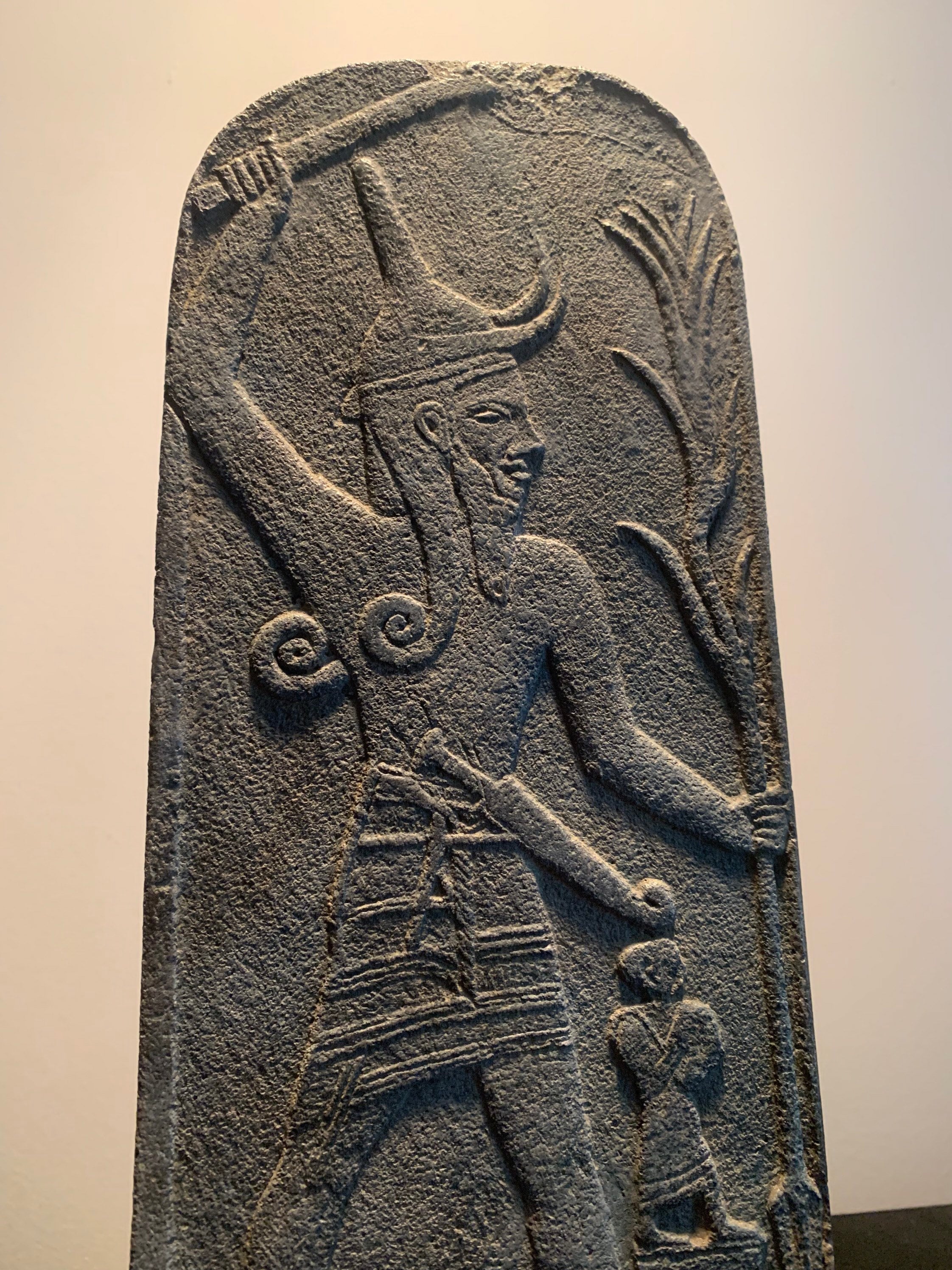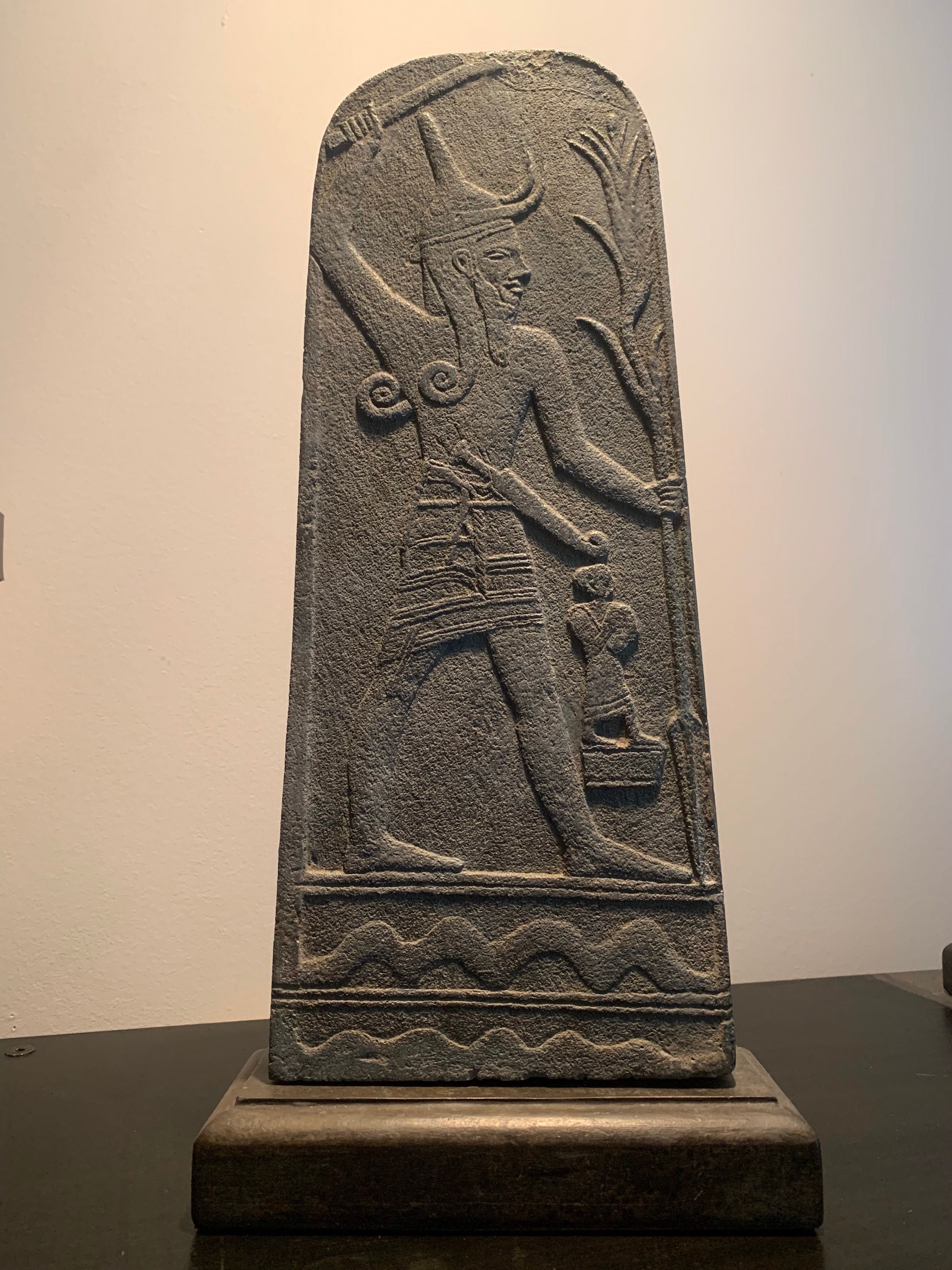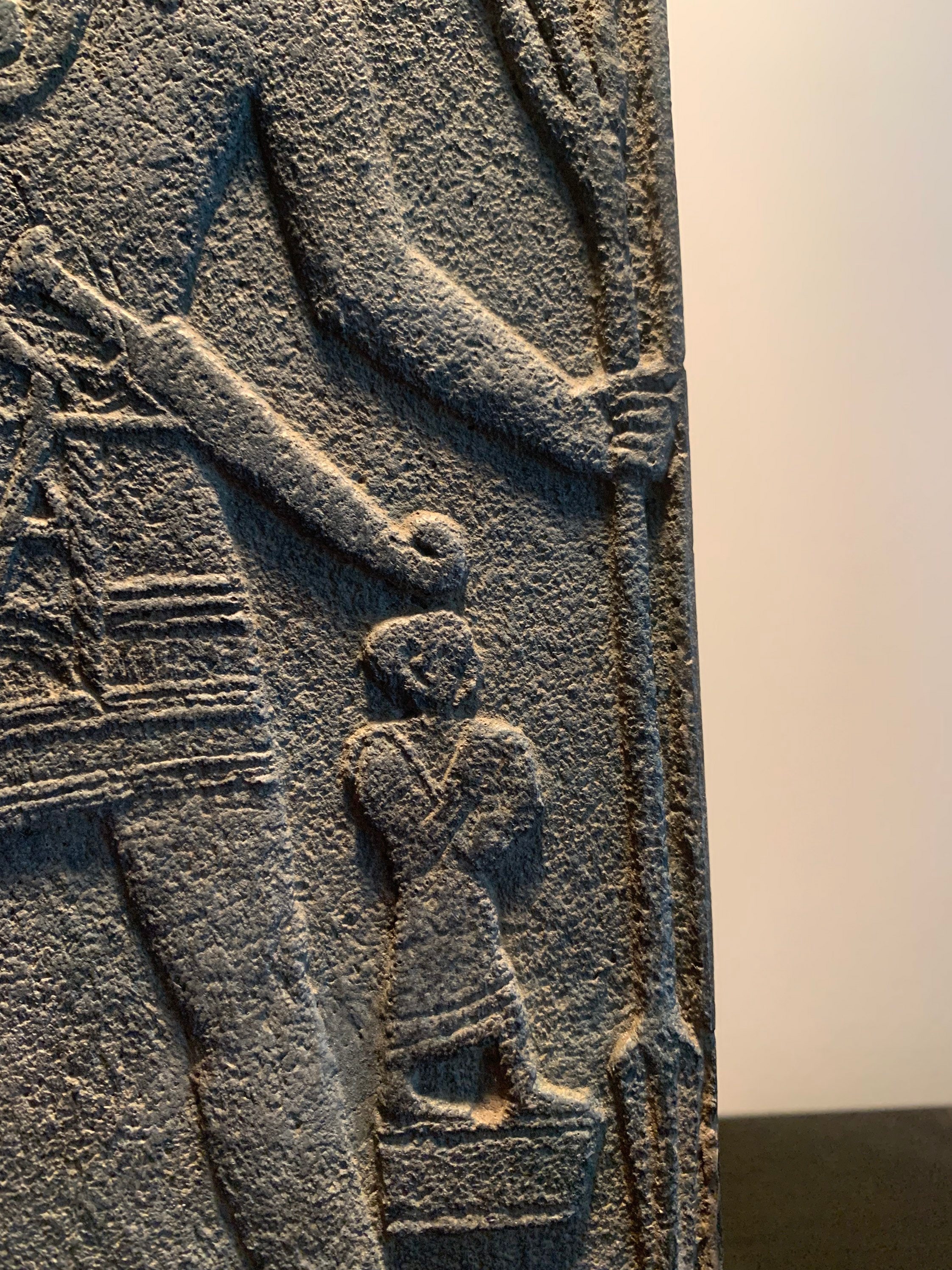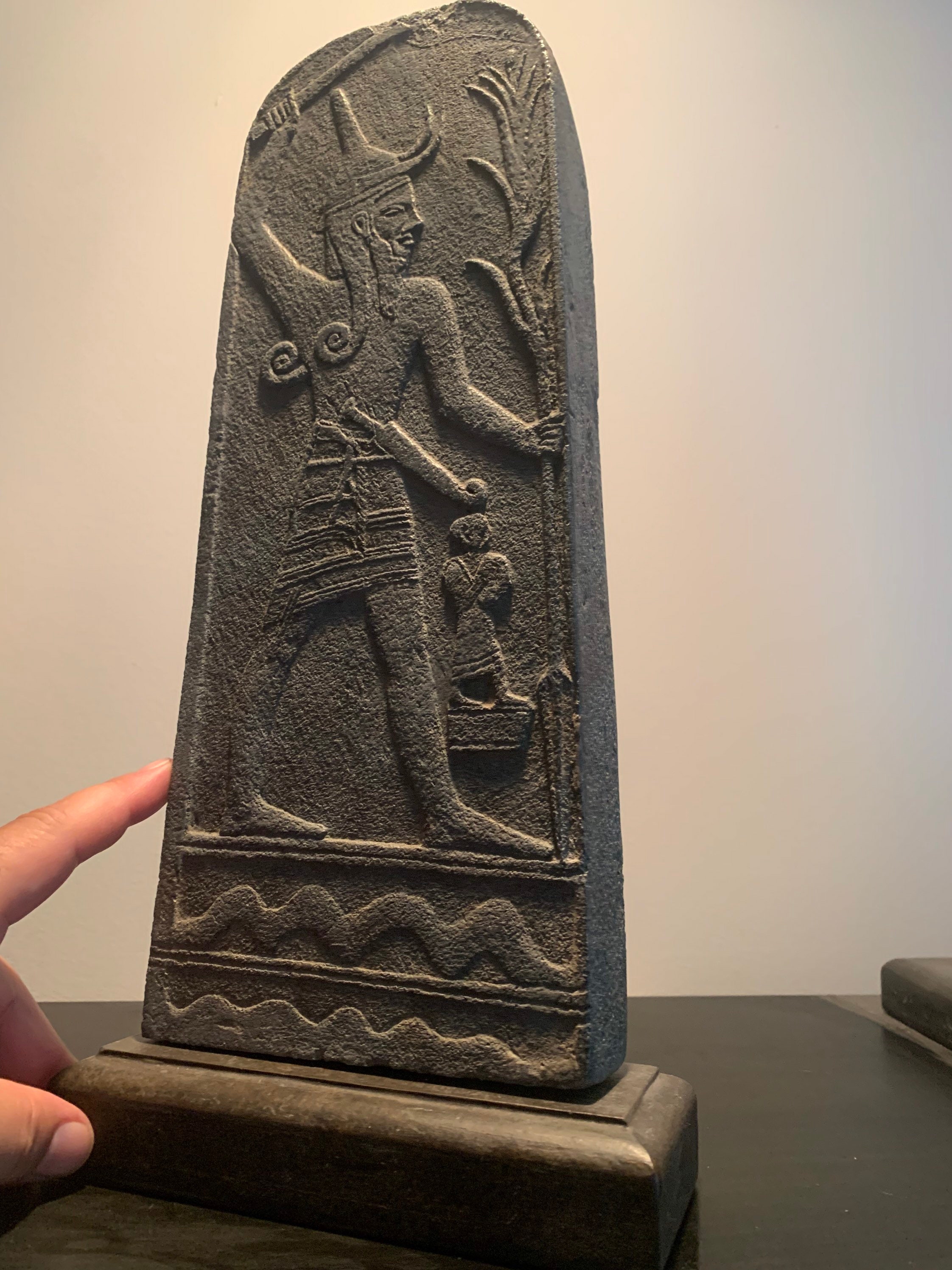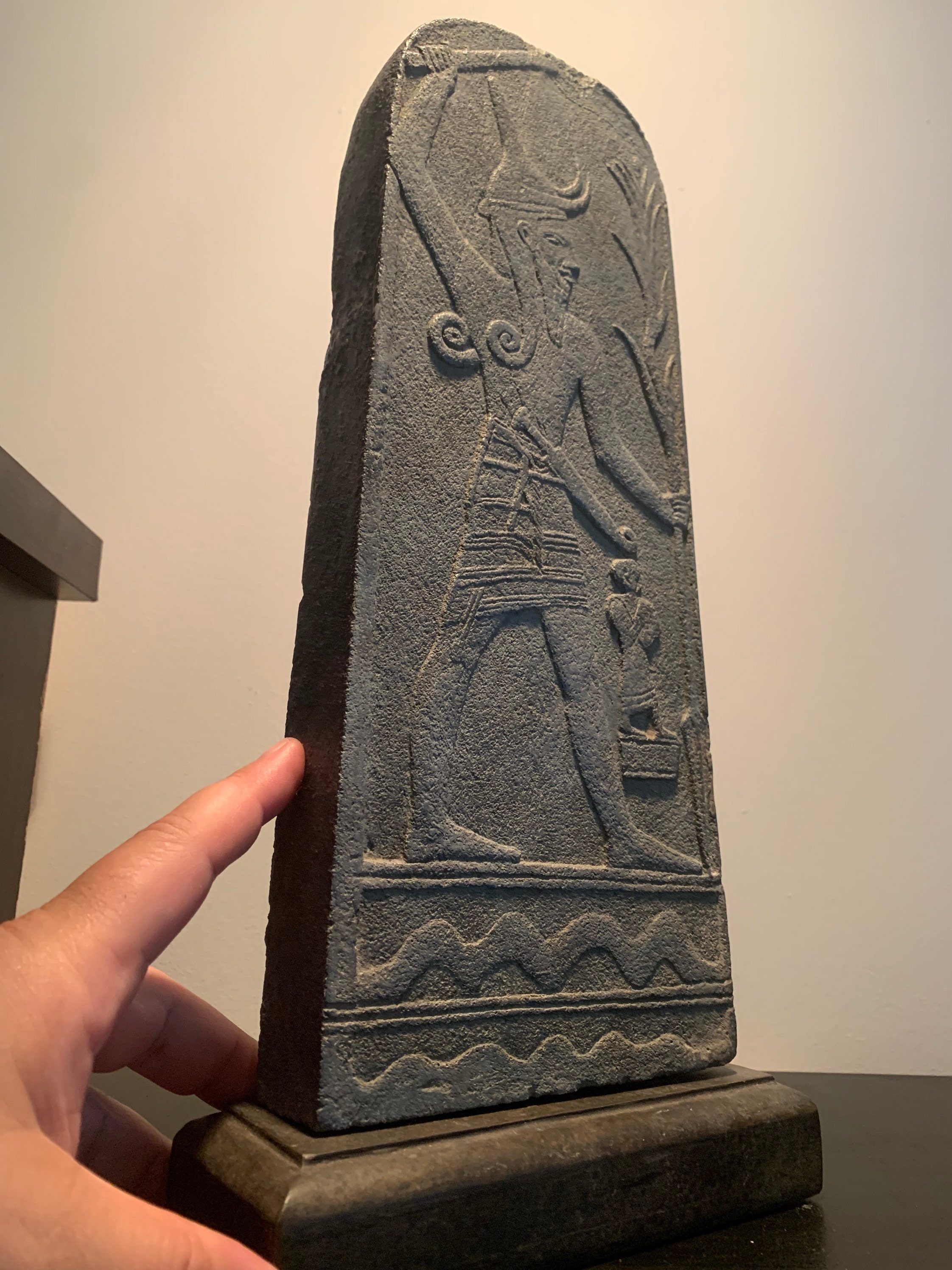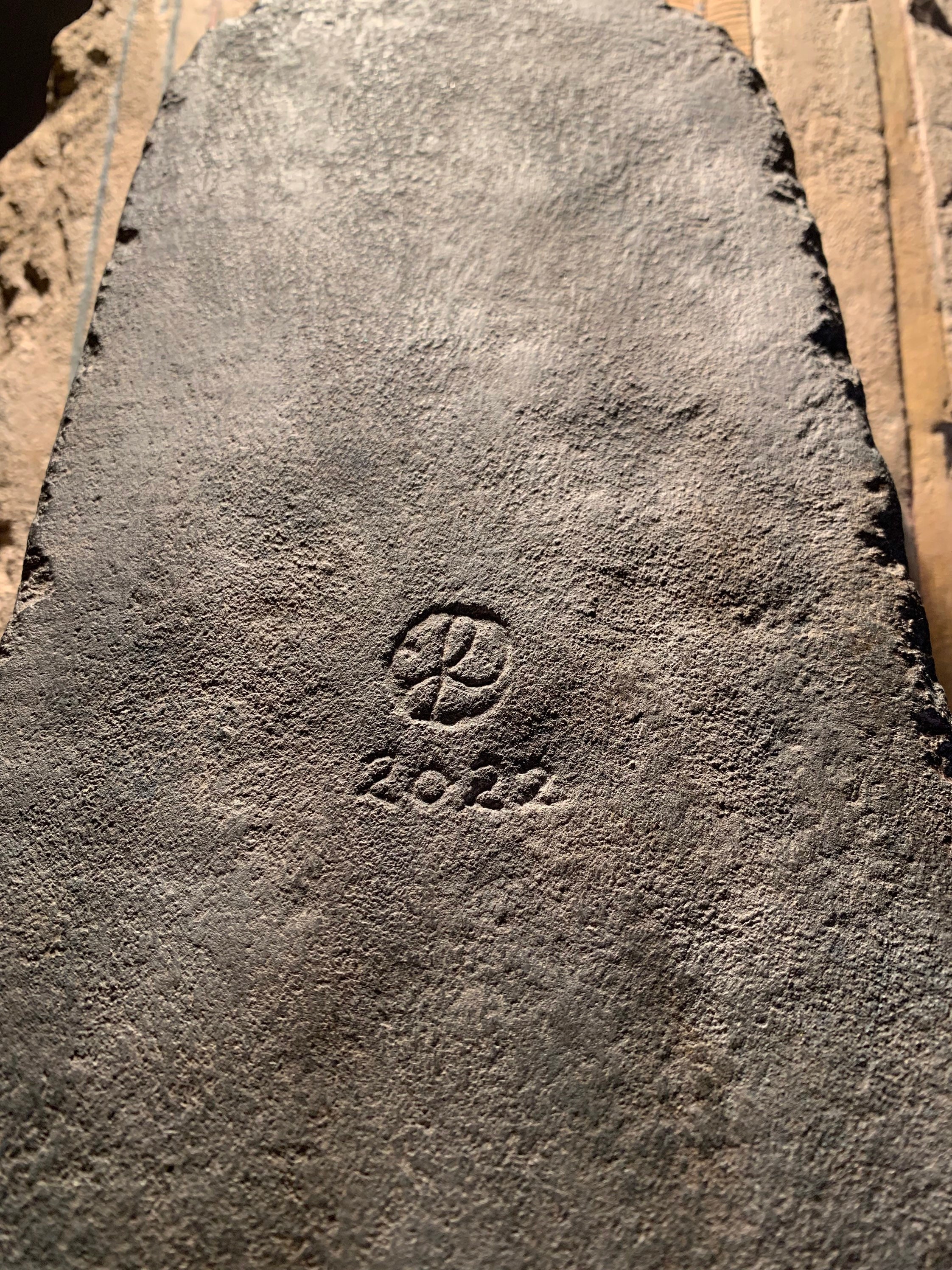Ba’al / Baal relief carving. God of storms, thunder and lightning. Rider of the clouds
$158.34
Baal / Ba’al
‘He who rides the clouds’
Dimensions :-
Total height with stand -39.2 cm / 15-1/2 inches
Base stand length - 18 cm x 7-1/4 inches
Base stand width - 7 cm x 2-3/4 inches
On offer here for the very first time is a replica of the ancient deity known as Baal or more correctly spoken Ba’al. Go on. Have a go and say it out loud. Feel it. Is it Barl darl? No....it’s Ba’al darl.
Clasping a thunderbolt arrow, pounding it into the ground, in this carving Ba’al stands above a symbol of the precious water that his worshippers prayed for.
I have wanted to do this as a carving since I first saw his image back in 1990. I was only doing purely Egyptian works at the time and that deterred me from broadening my sculptural horizons.
Thus It has been the type of year to tackle long forgotten projects and It has been an absolute joy to finally bring it into being. I hope you like it.
.......................................................................................................................................
When I first saw the original image, it struck me how ‘Egyptianised’ this famous biblical Canaanite deity appeared. That was until I learnt that he was actually worshipped in Egypt as well and could be represented in the Egyptian canonical style. From as early as the Egyptian Middle Kingdom, (2050-1710 BCE) the cross cultural pollination of the region’s deities helped bridge divides with nuanced religious diplomacy.
.......‘You worship or at least acknowledge my god and we will recognise yours and we can ride our gilded chariots in peace into the sunset’.....said Pharaoh to his northern Canaanite counterpart.....perchance to dream. Perhaps.
Artistic style and skill exchange was also a happening part of life during peaceful periods. No doubt Egyptian artists had an impact on neighbouring countries with Egypt’s enduring and already ancient style. The Phonecians in particular produced many Egyptian-esque artworks.
This explains why essentially the carving looks Egyptian in overall pose and proportion, however, it has distinctive differences. The grasping of a lightning bolt is very unusual as is the narrow, horned headdress. Even the multiple curls of the hair are very different to how an Egyptian male figure is depicted - mortal or otherwise.
With the exception of youthful figures like Princes and the deity Harpocrates.....who do sport a single curled sidelock, upward curled hair for male Egyptians was a rarity.
Ba’al was revered in many ancient nations and each kingdom fostered their own meaning to his omnipotence. To the Phonecian people he was a ‘Lord of the Heavens’, to the Canaanites he was a god of fertility while the Hebrews gave him perhaps his most well known and beautiful epithet, ‘He who rides on the clouds’.
The latter description leads into his other modern titles such as ‘God of thunder and lightning’ which indeed he was. A lord above the other gods of his time he can be regarded as a prototype Zeus of ancient Greek mythology which was to come into full bloom in the future.
Unlike Egypt and Mesopotamia who were blessed by reliable river systems to water their lives, the lands of Canaan relied on rain and morning dew to prosper. Ba’al was to be worshipped with fervour to keep the rain coming.
........................................................................................................................................
I think this piece would look great next to a window so he can see the lightning!
Check out many more ancient designs at Down under Pharaoh instagram and YouTube. Many can be made to order here.
Definitely worth a look!
*As each item is handmade, slight colour variations may occur.
Shipping from Australia
Processing time
3-5 business days
Estimated shipping times
- North America : 1 - 3 weeks
- Europe : 1 - 3 weeks
- Australia, New Zealand and Oceania : 1 - 2 weeks
- Asia Pacific : 1 - 3 weeks
- Latin America and the Caribbean : 1 - 3 weeks
- North Africa and the Middle East : 1 - 3 weeks
- Sub-Saharan Africa : 1 - 3 weeks
I'll do my best to meet these shipping estimates, but can't guarantee them. Actual delivery time will depend on the shipping method you choose.
Customs and import taxes
Buyers are responsible for any customs and import taxes that may apply. I'm not responsible for delays due to customs.
Payment Options
Returns & Exchanges
I gladly accept returns and cancellations
Just contact me within: 5 days of delivery
Ship items back to me within: 14 days of delivery
Conditions of return
Buyers are responsible for return shipping costs. If the item is not returned in its original condition, the buyer is responsible for any loss in value.

